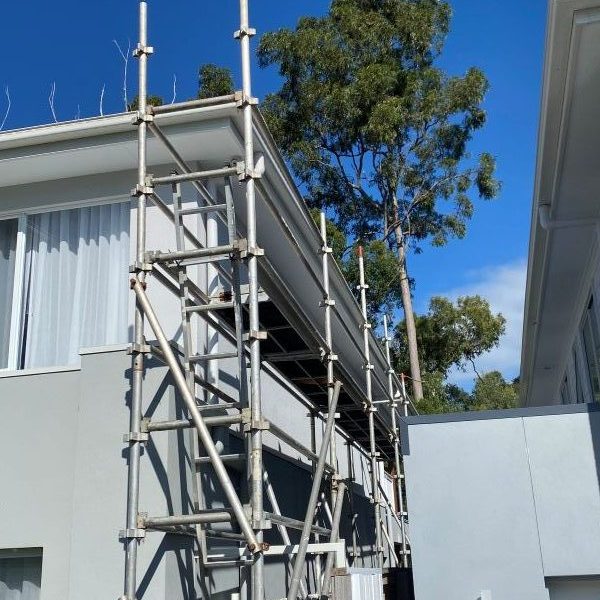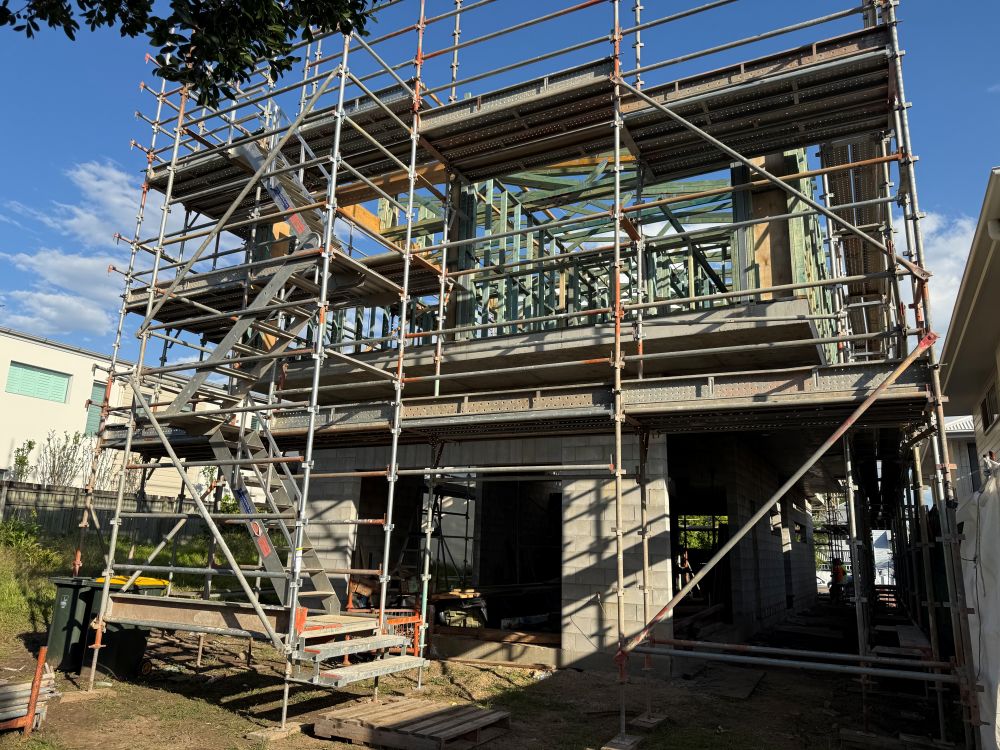Enhancing Scaffold Load Capacity: Essential Safety and Compliance Insights for the Construction Industry
Scaffold load capacity is a pivotal concept in the construction sector, defining the maximum weight that a scaffold can safely sustain during various activities. This critical aspect encompasses three primary categories of loads that demand careful evaluation:
- The weight of the scaffold itself, commonly known as the dead load, which is essential for understanding the structural limits.
- The weight of workers, alongside their tools and materials placed on the scaffold, referred to as the live load, which varies based on the workforce and equipment involved.
- External forces such as wind, rain, or vibrations impacting the structure, classified as environmental load, which can significantly affect stability.
A comprehensive understanding of these loads is indispensable, as they collectively determine the overall stress exerted on a scaffold throughout its operational lifespan. Adhering to these calculations is not merely advisable; it is mandated by Australian law to safeguard the well-being of all personnel engaged in construction activities.

Effective Use of Our Scaffold Load and Height Calculator: A Comprehensive Guide
While a universal formula does not apply to every scaffold configuration, our scaffold calculator offers a user-friendly interface designed to provide precise estimates by simplifying critical variables. This tool is specifically created for residential builders, homeowners, and scaffold hire professionals who adhere to the stipulations outlined by Australian OHS standards.
Step 1: Identify the Type of Work Required
Determine the nature of the work to be performed, which may encompass activities such as roof restoration, exterior painting, solar panel installation, cladding, or rendering, ensuring that the right scaffold type is selected for the task.
Step 2: Specify the Number of Workers
For instance, you may indicate that two workers will be simultaneously operating on the scaffold platform, which is essential for calculating the live load accurately.
Step 3: Estimate the Weight of Materials
This step might involve accounting for approximately 120 kg worth of rendering materials or tools that will be utilised during the course of the project, contributing to the overall load calculation.
Step 4: Input the Height of the Platform
For example, the height could be established at 4.5 metres above ground level, a critical factor in determining the stability and safety of the scaffold.
Upon entering this information, the calculator will generate a tailored scaffold configuration that includes:
- The appropriate duty class (e.g., Light, Medium, or Heavy), ensuring that the scaffold meets the requirements of the job.
- An estimation of the Safe Working Load (SWL) per bay, which is crucial for safe operation.
- The recommended scaffold type (e.g., aluminium tower or steel frame), based on the specific needs of the project.
- Necessary safety features required, including guardrails, soleplates, and stabilisers, all of which enhance safety.
- Any compliance triggers associated with height (e.g., tie-offs required for scaffolds exceeding 4 metres), ensuring adherence to regulations.
Understanding the Absence of a Universal Load Formula for Scaffolding
Even though the scaffold calculator serves as a practical tool for making estimates, scaffolders and engineers do not depend solely on a singular formula. This reliance is due to several significant factors:
- Scaffold systems can differ considerably based on their materials and designs, such as aluminium, steel, modular, and tube-and-coupler scaffolds, each with unique properties.
- The intended use of the scaffold heavily influences its load capacity; for example, painting tasks necessitate different considerations than masonry work.
- Diverse manufacturers provide varying platform strength and component ratings, which can lead to discrepancies in safety assessments.
Industry Standard Methodology for Calculating Safe Working Load (SWL)
Professionals in the field often reference the following formula as a fundamental guideline for estimating:
Safe Working Load (SWL) per bay = (Platform Load Rating × Safety Factor) – Scaffold Component Weight
Illustrative Example:
- A platform rated for a maximum load of 600 kg, providing a clear benchmark for safety.
- Implementing a 4:1 safety margin: using only 25% of the rating results in a 150 kg capacity.
- Subtracting the weight of the scaffold structure, which is 100 kg, from the overall capacity.
- The resulting usable working load is 50 kg—a conservative estimate that often does not reflect actual planning needs.
Given the complexities of real-world conditions, professional scaffolders typically adhere to manufacturer guidelines, engineering tables, and local regulations rather than relying solely on this simplified formula.

Best Practices Adopted by Professionals in Scaffold Evaluations
Professional scaffold evaluations typically encompass several critical components to ensure safety and compliance:
- Thoroughly reviewing manufacturer load data and verified span ratings for accuracy, which is paramount for safety assessments.
- Calculating the total live, dead, and environmental loads to guarantee the scaffold can withstand all forces.
- Ensuring compliance with AS/NZS duty class specifications, which align with industry standards and regulations.
- Securing engineering sign-off for any bespoke or elevated scaffold configurations, confirming their safety and reliability.
- Conducting comprehensive visual and structural inspections prior to scaffold use to identify any potential hazards that could compromise safety.
Customising Scaffold Practices for Environmental Conditions and Site-Specific Factors
Addressing Wind Exposure in Coastal Queensland
In areas classified under wind zones N3 and N4, the lateral forces impacting scaffolds are markedly intensified. Consequently, it becomes imperative to secure scaffolds at shorter intervals, with additional bracing or shade cloth being necessary, especially during high-wind seasons to maintain stability.
Considerations for Soil and Ground Types
When faced with unstable or sloped soil conditions, the utilisation of soleplates and adjustable base jacks is essential to enhance scaffold stability. Furthermore, sites with varying elevations may necessitate the implementation of levelled bay systems to uphold a secure working environment.
Regulations for Work Above Four Metres
In Queensland, any platform that exceeds four metres in height requires thorough inspection and certification. A scaffold handover certificate is mandated under the Work Health and Safety Regulation 2011, ensuring compliance with established safety standards.
Key Safety Regulations to Follow
- Work Health and Safety Regulation 2011 (QLD), which outlines essential safety requirements.
- Managing the Risk of Falls at Workplaces (Code of Practice, 2021), providing guidelines to minimise fall risks.
- AS/NZS 1576 and AS/NZS 4576 Standards for scaffold safety, ensuring compliance with industry best practices.
- High Risk Work Licence (HRWL) is mandatory for any scaffold setup exceeding four metres in height.
Site supervisors bear the responsibility for conducting regular inspections, especially following adverse weather incidents or significant modifications to scaffold height or load, thereby ensuring ongoing adherence to safety regulations.
Real-World Application Case Study: Scaffold Use in Robina
Recently, in a project located in Gold Coast, a homeowner in Robina required scaffolding to repaint and render the exterior wall of a two-storey building. The operational height for this task was established at five metres, and two tradespeople utilised approximately 200 kg of rendering materials and tools throughout the duration of the project.
Employing our scaffold calculator, the suggested scaffold configuration was as follows:
- Scaffold class: Medium Duty, appropriately suited for the task at hand.
- System type: Steel frame combined with timber planks to ensure durability and safety.
- Additional safety measures: Comprehensive edge protection, soleplates for soft soil conditions, and wind mesh to mitigate wind exposure.
The scaffold successfully passed all mandated inspections and complied with Queensland’s OHS regulations, resulting in no interruptions during the project's progress.
Essential Considerations for Scaffold Height and Load Capacity Calculations
Determining scaffold height and load capacity should never be treated lightly or as a matter of guesswork. In residential projects, this meticulous approach is vital for ensuring safety, effectively managing costs, and achieving compliance with local regulations.
Given the specific requirements applicable to Australian conditions, particularly in southeast Queensland, we strongly recommend obtaining an accurate scaffolding quote and ensuring that all installations are conducted by qualified professionals.
Reach Out to CanDo Scaffolding Hire for Professional Guidance and Services
For additional information regarding our scaffold services, please do not hesitate to contact us at 1300 226 336 or send an email to theguys@cando.com.au at your convenience.
We provide a comprehensive array of scaffolding solutions, including void protection platforms and roof edge protection, tailored to meet the specific needs of any residential or light commercial construction project.
Understanding Scaffold Load Capacity for Residential Projects
The Article: Scaffold Load Capacity Insights for Residential Projects first appeared on https://writebuff.com
The Article Scaffold Load Capacity for Residential Construction Projects Was Found On https://limitsofstrategy.com

